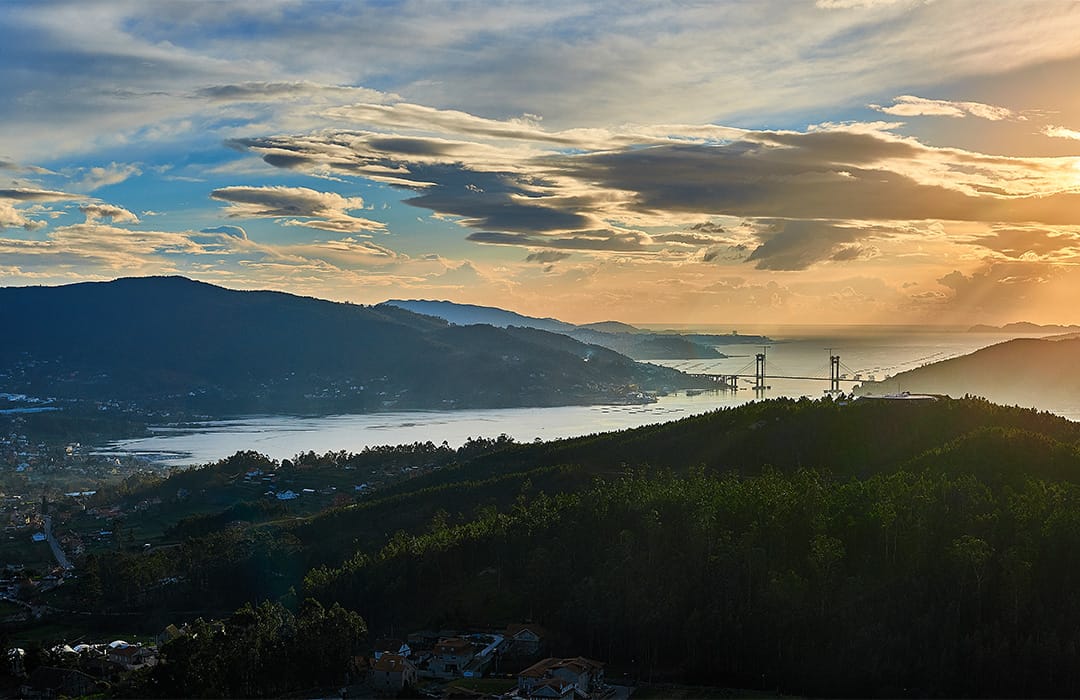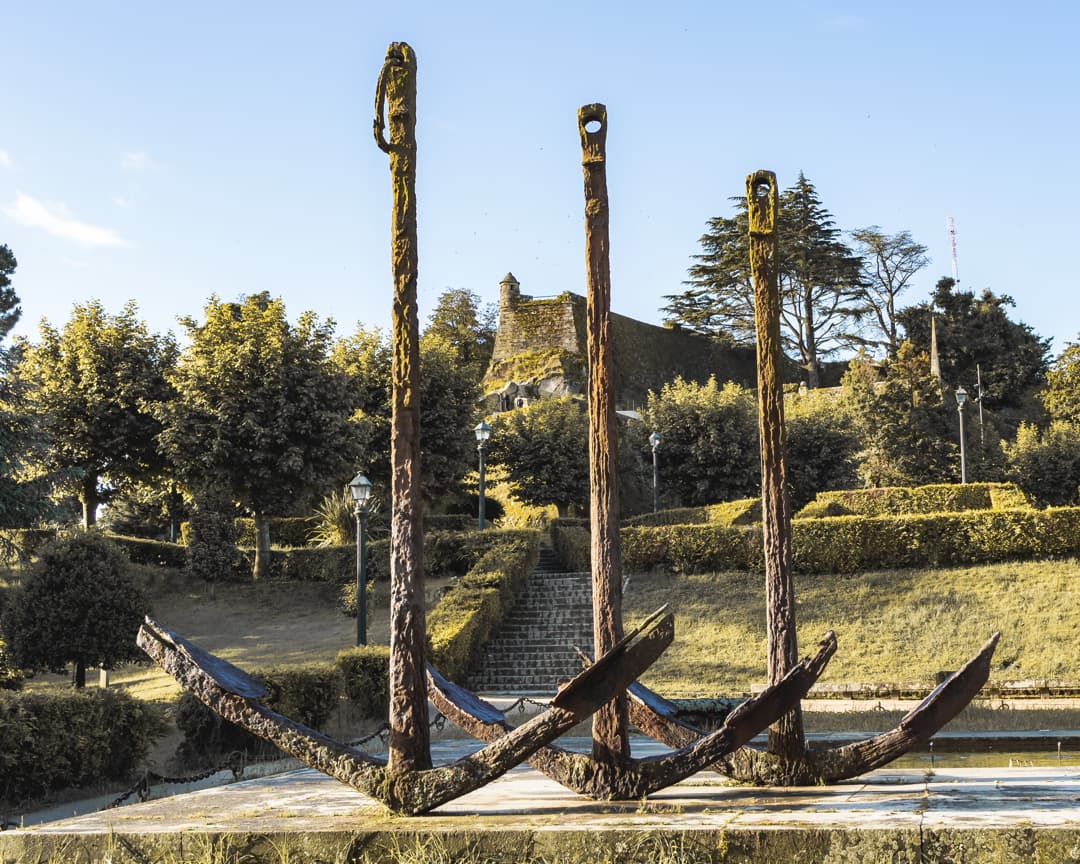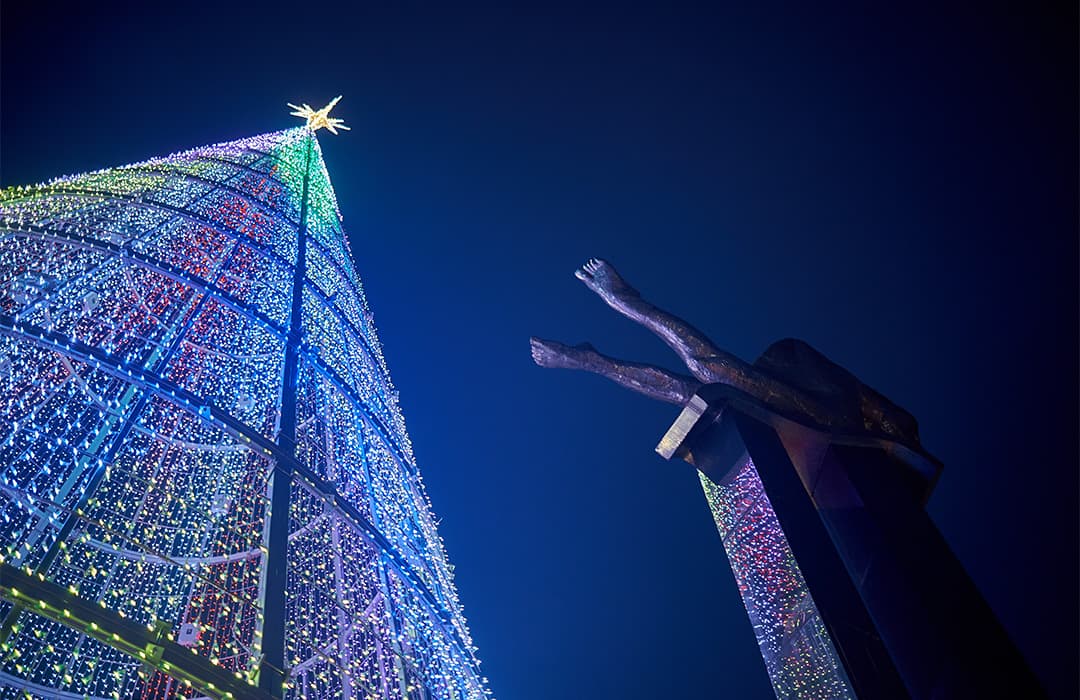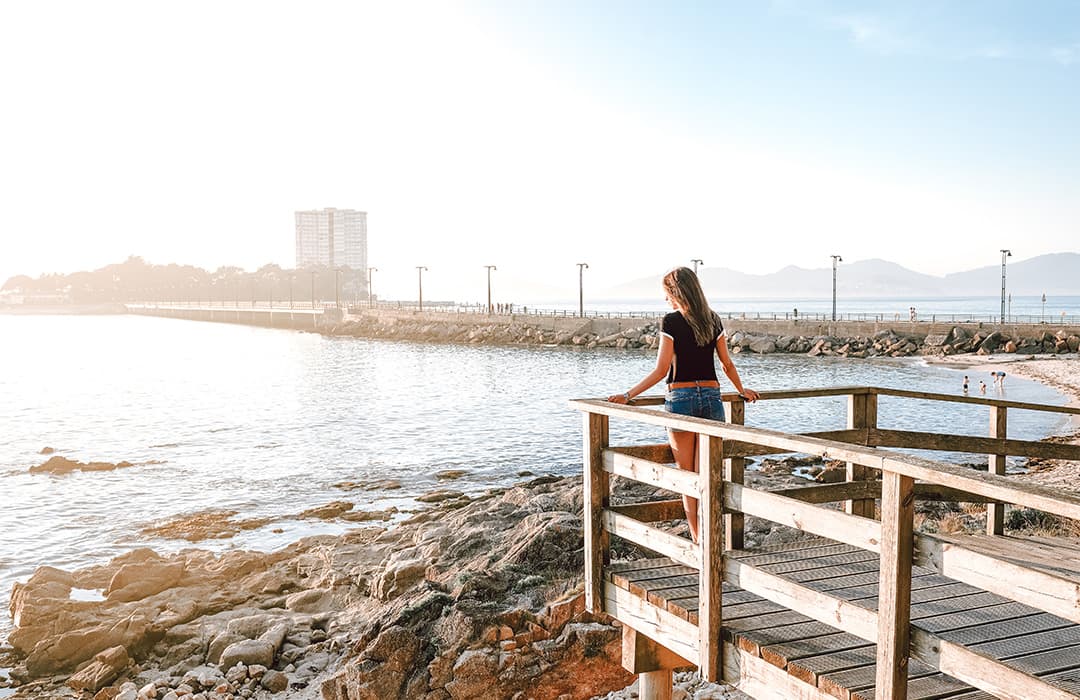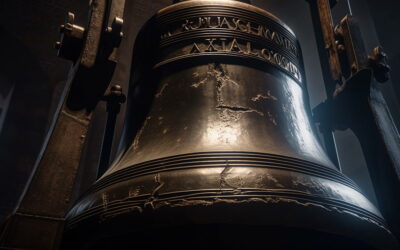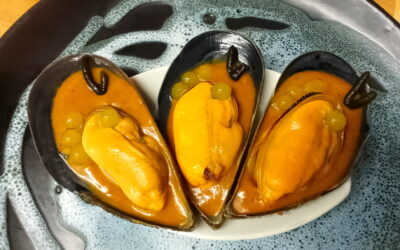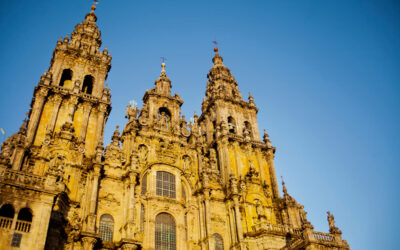visit
vigo
A coastal city with a lot of charm and one of the most important ports in Spain.
Vigo, the olive city
The city of Vigo, located in the province of Pontevedra, is currently the most populated city in Galicia, with almost 300,000 inhabitants. It is located in the middle of the estuary to which it gives its name, the southernmost of the Rías Baixas and home to the famous Cíes Islands. This coastal city offers its visitors great landscapes, beaches, monuments and experiences that will leave a mark in their memory.
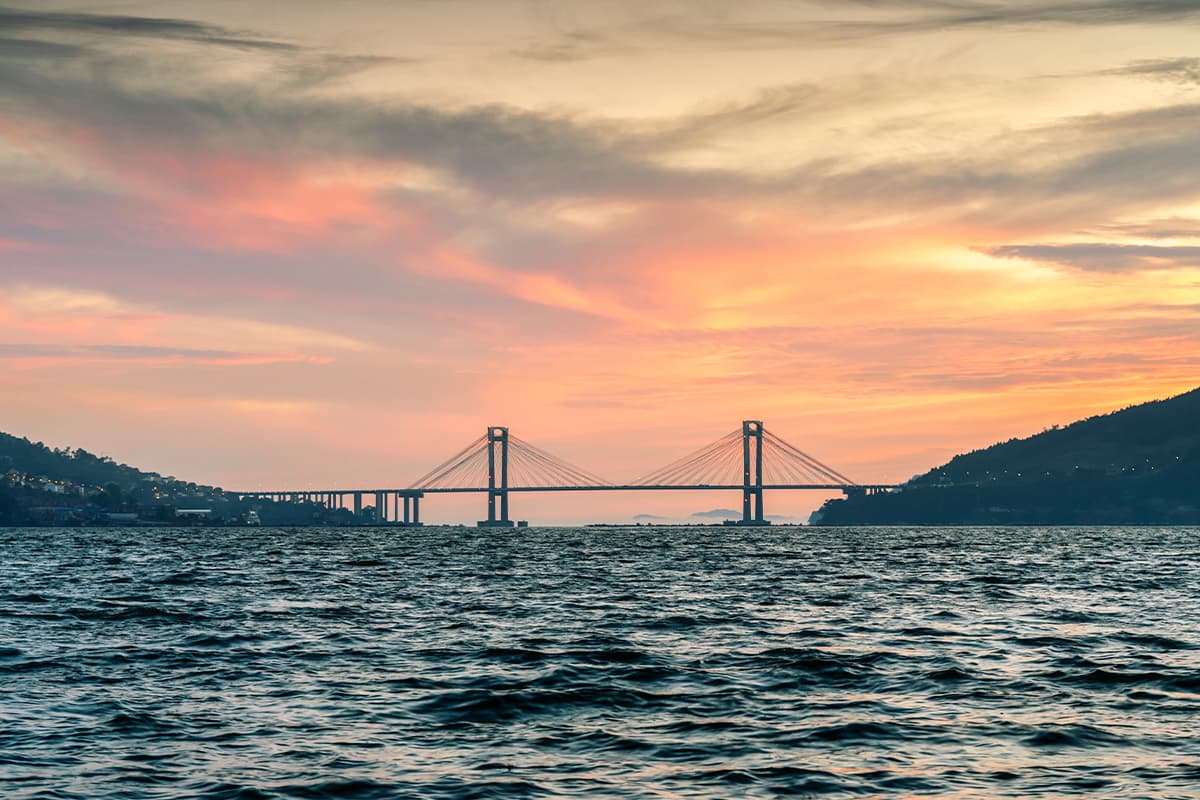
A glimpse of its history
The region of Vigo was populated since ancient times, something that we can know thanks to the number of mamoas and dolmens found in the area. Although no Paleolithic sites have been found.
During the Iron Age, from the 8th century B.C. to the end of the 1st century A.D., the well known “castreña” culture took place and left many vestiges in Vigo. Specifically, 26 fortified settlements, which suggests that the area had one of the highest population densities in Galicia. The inhabitants lived mainly from agriculture, hunting and fishing.
During Roman times, the city was known as Vicus Spacorum and enjoyed a great port and commercial activity on its coasts. Numerous vestiges of this era remain, such as the Roman Villa of Toralla, salt mines or necropolis.
After the decline of Roman civilization and the consequent entry into the Middle Ages, Vigo, like the rest of Galicia, was under the power of the church. For this reason, it depended heavily on the Cistercian monastery of Melon.
At this time, Vigo was the target of the Viking attack. This caused its inhabitants to flee in search of refuge inland, occupying Monte do Castro. As a result, for a time the city was on the verge of disappearing and lost commercial importance.
From the 12th century, the city began to recover its population. However, it was still under the yoke of the Church and feudal lords. The most important parish was that of Santiago de Vigo, next to the neighborhood of Santa María.
In the following centuries, Vigo gradually recovered its importance, despite numerous pirate attacks. In 1589, it resisted the attempt of the pirate Francis Drake to take the town, which failed thanks to the opposition of the neighbors.
In 1702, the famous Battle of Rande took place, in which the Silver Fleet, carrying riches from America for the Spanish crown, was destroyed in the Ría de Vigo by English and Dutch ships.
It should also be noted that in the eighteenth century, King Charles II broke the monopoly of ports authorized to trade with America, something that benefited the city of Vigo.
During the 19th century, Vigo continued to grow and increase its industry related to the salted fish and seafood factories. The railroad arrived in 1881 and the city expanded with the creation of new neighborhoods. In 1898, the Pereiró cemetery was built in memory of the fallen in the Cuban War. As it always received the wounded coming from this battle, it was given the title of “Always Beneficent”.
The Vigo of the 20th century is closely linked to the image of the emigration of thousands of Galicians to the American continent. The city also developed with the fishing and automobile industries and shipyards, with the creation of companies such as Pescanova and the installation of others such as Citroën.
All this development has led Vigo to become one of the most important fishing ports in Spain.

a very particular olive tree
Vigo is known as the olive city, a nickname that has a particular history. In ancient times, in the atrium of the church of the Collegiate Church of Santa Maria, there was a large olive tree, planted by the Knights Templar when they still ruled the parish.
This old tree disappeared when the present church was built. However, after it was felled, Don Manuel Angel Pereyra planted one of its branches in his orchard, in front of the Puerta del Sol.
Here, it took root and grew until it had to be displaced due to the development of the city. Since then and until today, it is located in the Paseo de Alfonso XII, protected by an iron fence.
For this reason, this olive tree has become a symbol of Vigo’s history.
the must-sees of vigo
La turbulenta historia de Vigo ha dejado en el presente numerosos vestigios, monumentos y lugares históricos que merece la pena visitar. Por no hablar de los bonitos paisajes y otras localizaciones que tiene para ofrecer a turistas y ciudadanos.
Para facilitar tu itinerario, te hemos hecho esta lista de los imprescindibles que debes ver antes de irte de esta encantadora ciudad.
old quarter
The Old Quarter, also known as the Casco Vello or Old Vigo, is a place that has been slowed down in time and reminds us of the city’s past. It is an ideal area to stroll around observing the buildings and facades that make it up, as well as to go for a drink in the many bars and restaurants it houses.
In the neighborhood, there are numerous craft, antique or pop-up stores that are worth a visit.
You can visit the Plaza de la Constitución, declared a Historic Site by the Xunta de Galicia and which houses the old City Hall. This is the perfect place to have lunch or tapas, as it has several terraces.
We also recommend that you visit the olive tree of Vigo in the Paseo de Alfonso XII, which features the coat of arms of Vigo, and the church of the Collegiate Church.
bouzas neighborhood
The neighborhood of Bouzas, located about 4 kilometers from the center, preserves the seafaring essence that once reigned throughout the city and clashes with its current style. In fact, it was independent of Vigo until 1904, when it was absorbed. It even has its own soccer team, the Rápido de Bouzas.
Through its cobblestone streets, low sailor houses, its port or market, you will be transported to the fishing past of the area and you will feel that you are visiting a completely new city.
In addition, it has numerous taverns where you can have octopus, zamburiñas or empanada and enjoy the Galician gastronomy.
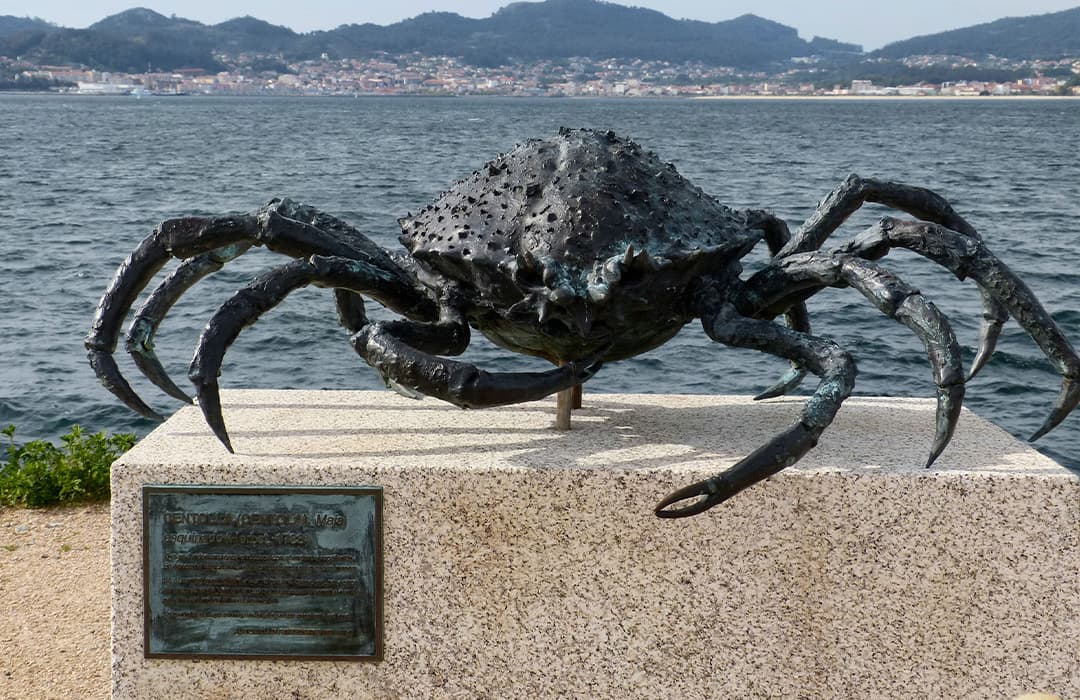
“Vigo-Paseo de Bouzas-A Spider Crab” by juantiagues is licensed under CC BY-SA 2.0.
samil beach
One of the best known beaches in Vigo is Samil beach, a place where hundreds of people come to cool off during the summer.
It is the largest urban beach in the city, with more than one kilometer long and has numerous shops and services, such as bars and restaurants.
You can stroll along its beautiful promenade and observe its wonderful views of the coast and the Cíes Islands. Perfect to enjoy the good weather and disconnect from the hustle and bustle of everyday life.
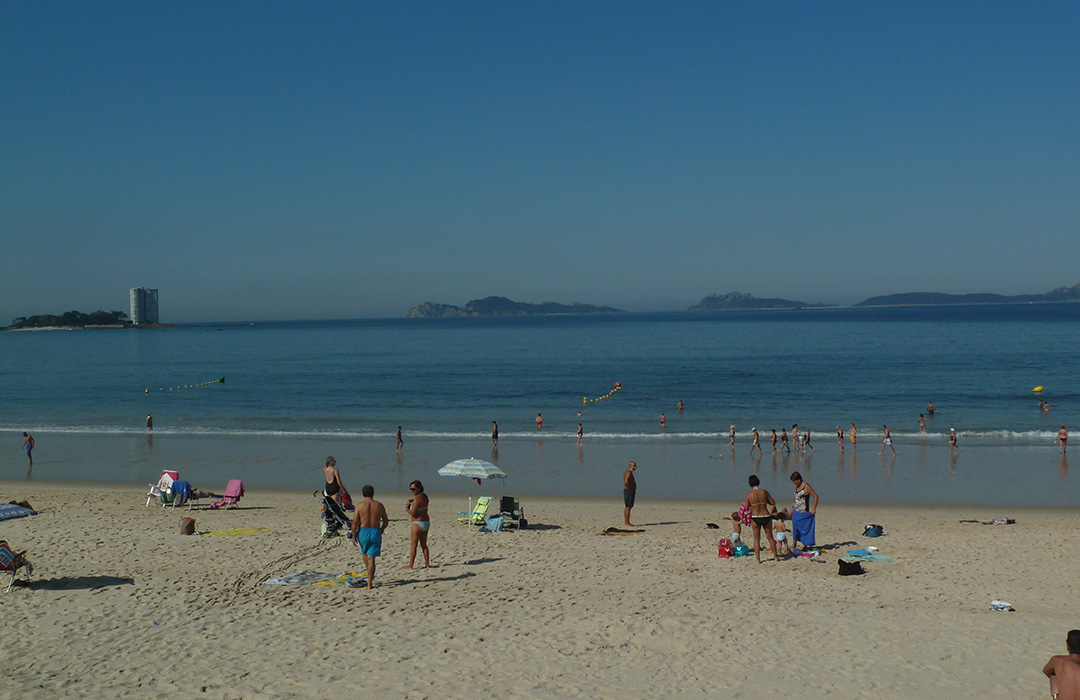
“Vigo” by sergei.gussev is licensed under CC BY 2.0.
Monte de O Castro
The O Monte de O Castro is a park that has one of the best views of the Vigo estuary. It is in the heart of the city and is its point of origin, since it is where the first settlers settled.
On one of its hillsides, there is a beautiful castreño site, which you can visit to see what life was like in Vigo during the third and first centuries B.C. Another must-see on this mountain is the castle of O Castro,a spectacular fortress that you can see for free.
Do not miss the monument in honor of the Battle of Rande, which consists of anchors and cannons that recall this fierce battle that took place in the estuary.
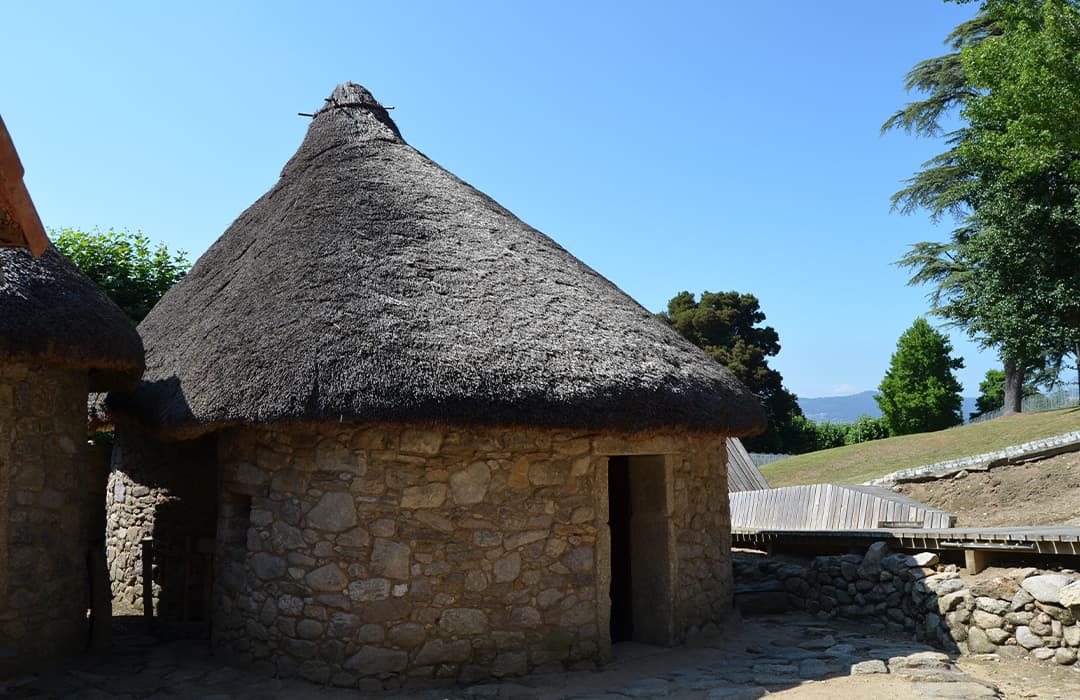
“Before the Romans came” by Pedro Nuno Caetano is licensed under CC BY 2.0.
puerta del sol and the siren
The Basilica of Santa Maria was built by the Guild of Seafarers in the first half of the 16th century. It belongs to the late Gothic style and has a basilica plan with three naves divided by eight columns. It stands out above all for its impressive facade, full of altarpieces, figures and sculptures, such as the figure of Christopher Columbus.
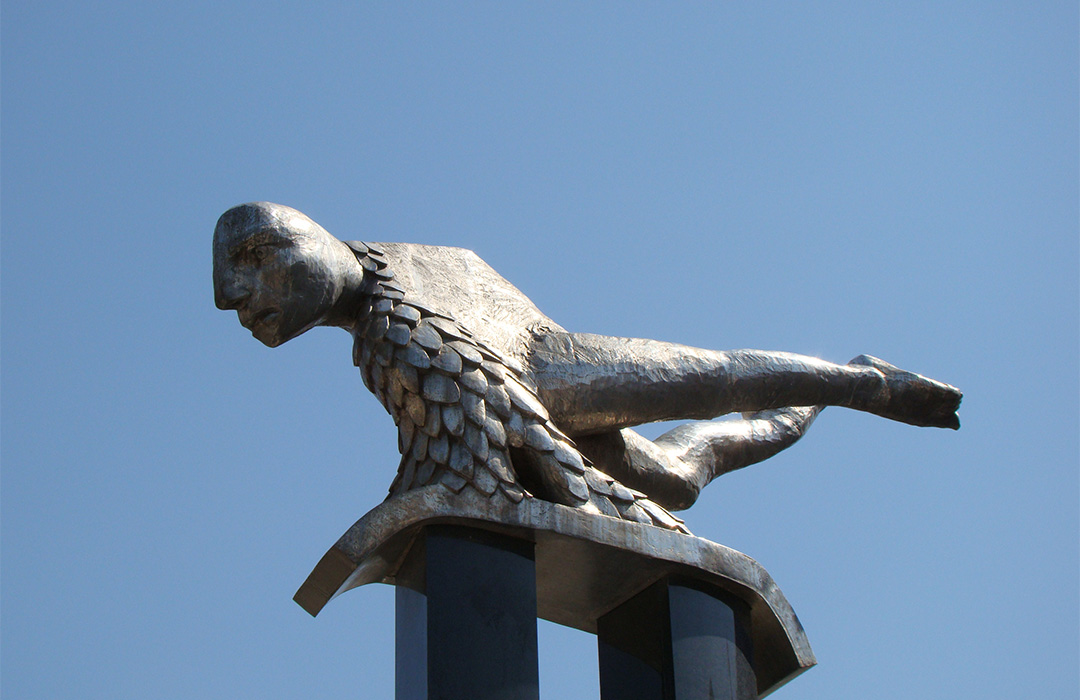
“Merman statue in Vigo” by The Sean & Lauren Spectacular is licensed under CC BY 2.0.
Archaeological site of the Roman villa of toralla
During Roman times, villas were the preferred settlement model for the occupants of the current territory of Vigo. These were residences equipped with luxurious elements, belonging to families that enjoyed a high status in society.
After the fall of the empire, many of its buildings were destroyed and fell into oblivion, leaving only the ruins. One of these is the Roman Villa of Toralla, which is located on the island of Toralla in the Vigo estuary.
You can visit this vestige in its entirety to connect with the remote past and learn about the lifestyle of the Romans who inhabited the Rías Baixas centuries ago.
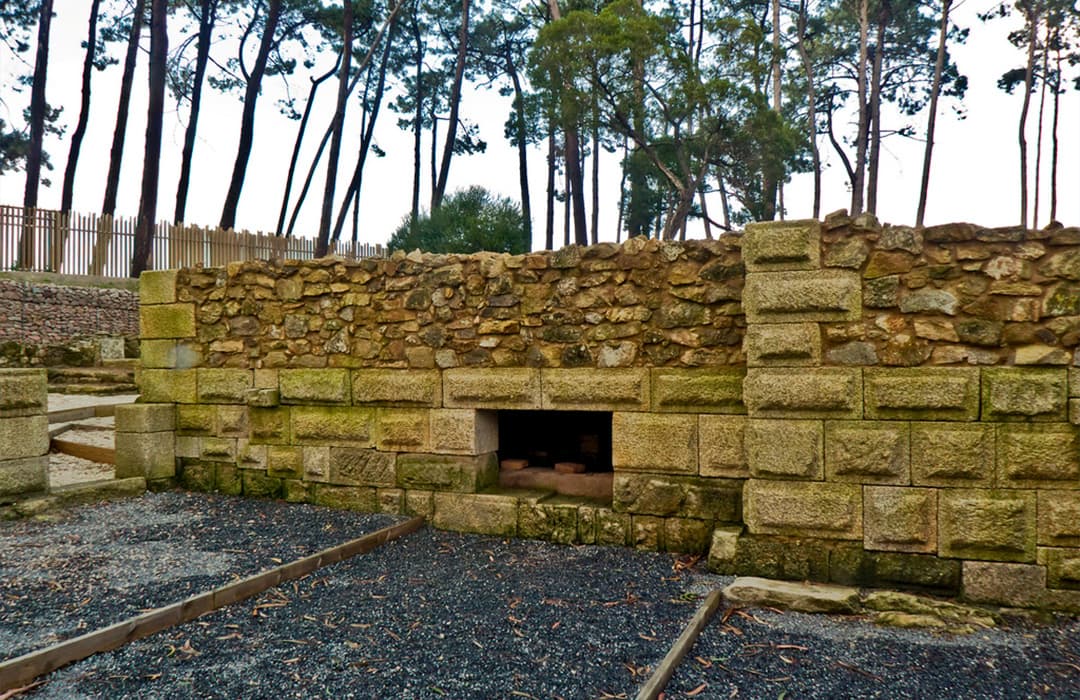
“File:Vila romana e salinas de Toralla – Vigo.jpg” by Lansbricae is licensed under CC BY-SA 2.0.
museum of contemporary art (marco)
The Museum of Contemporary Art (MARCO) is located on Rúa do Príncipe, one of the busiest streets in the city.
This building, built in eclectic style by José Mª Ortiz in 1861, was designed to house the old prison and courthouse of Vigo. Today, it houses this art center, created to disseminate contemporary proposals.
If you like art, you can visit its temporary exhibitions and immerse yourself in this avant-garde proposal.
Monte de A Guía
El Monte de A Guía corona el barrio vigués de Teis, uno de los más activos de la ciudad. Es un paraje que vigila la ría y que, en la antigüedad, era el elegido por las esposas de los marineros para encender hogueras que les ayudasen a volver a casa.
Contiene un bonito parque, presidido por la ermita de A Nosa Señora das Neves, desde donde se puede observar una gran vista panorámica de toda la Ría de Vigo y sus alrededores.
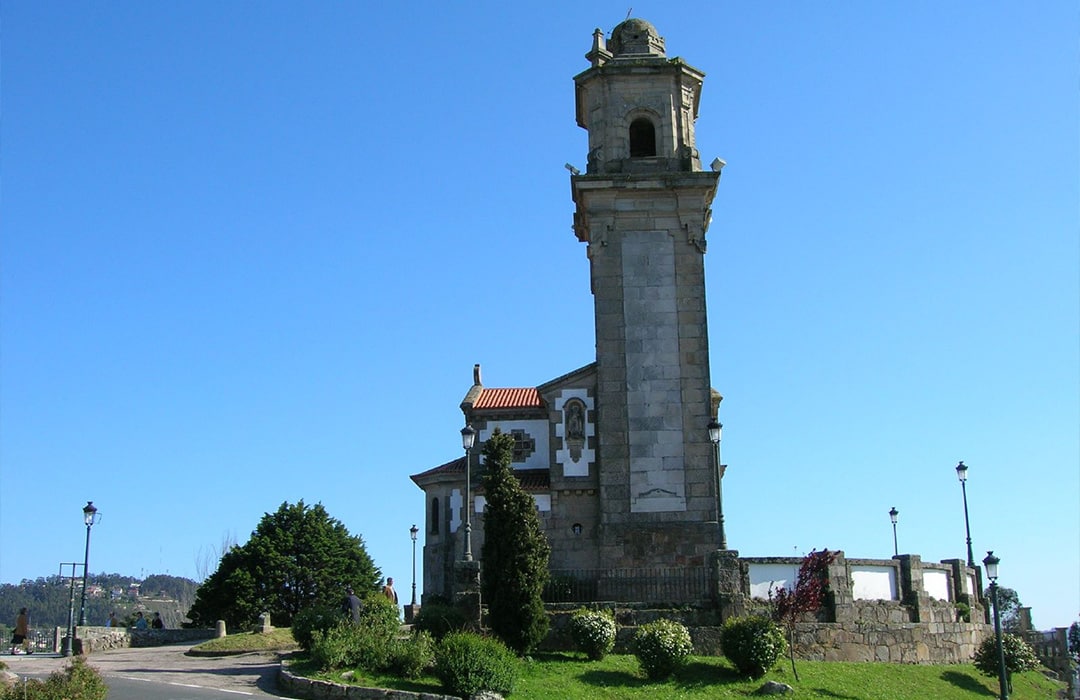
“Hermitage of A Guía” by FreeCat is licensed under CC BY 2.0.
alameda park
The Alameda Park, in Compostela Square, is a natural spot located very close to the port that is perfect for a stroll and relaxing in the shade of the trees.
It has a great variety of trees, flowers, benches and fountains that fascinate visitors and attract citizens to disconnect.
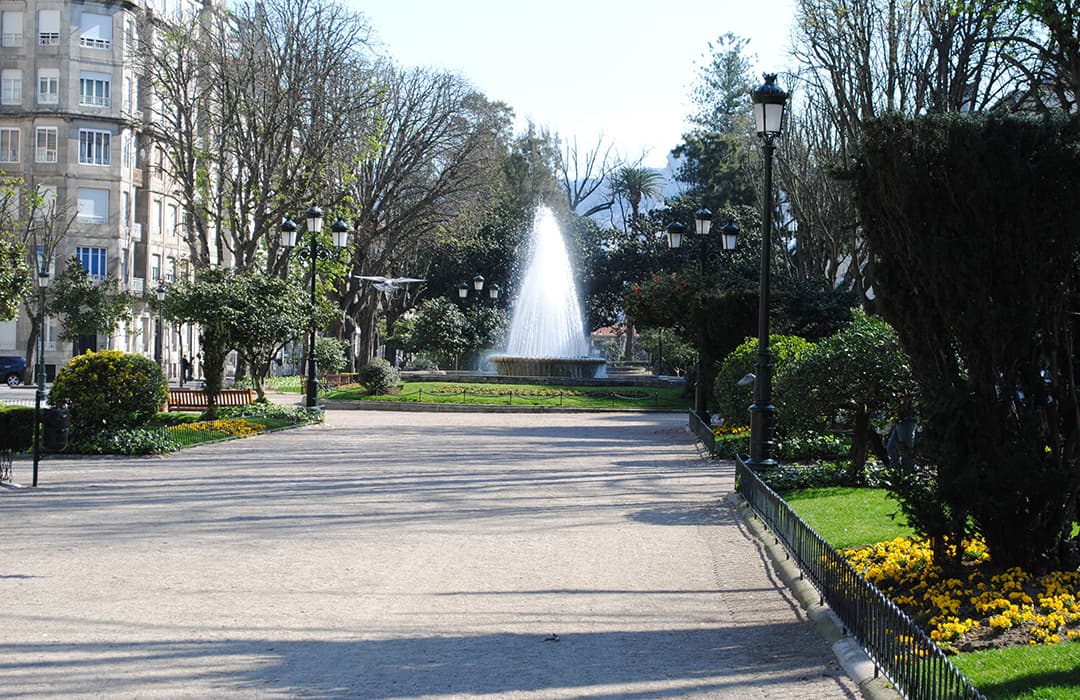
“File:Alameda de Compostela, Vigo.JPG” by TinMan is licensed under CC BY-SA 3.0.
gastronomy and leisure
Vigo has one of the most important ports in the country. It is one of the largest unloaders of fresh fish in Europe. Therefore, it is not surprising that its typical gastronomy is so closely related to the sea.
Among its most outstanding dishes is the classic seafood platter, consisting of portions of different types such as crabs, crayfish, spider crabs, shrimps or barnacles. You can also try some delicious fried peixiños, i.e. fried fish, while drinking a queimada, an orujo-based drink, to go with it.
And for dessert, you can have a piece of a llandera cake, created by a local artisan of the city in the 50’s, typical of Vigo.
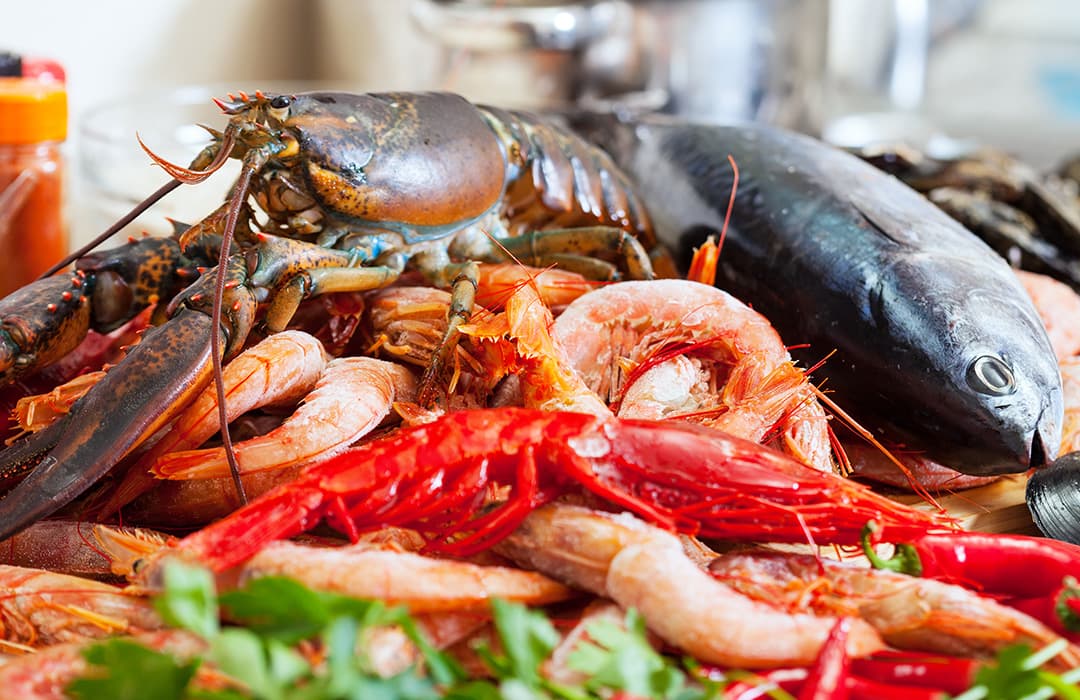
events and festivals
The most popular festivals in the city are thefeast of the Virgen del Carmen, the Reconquest of Vigo, the festivities of Bouzas, O Marisquiño and Christmas.
The feast of Our Lady of Mount Carmel
This festival is Vigo’s seafaring celebration par excellence, as it is dedicated to the patron saint of sailors. It is celebrated on July 16, a day on which the entire coast of the city is filled with processions, both by sea and by land.
The boats are dressed with flags and decorations and accompany the boat carrying the carving of the Virgin. They are held in the neighborhoods of Coruxo and O Berbés.
The reconquest of vigo
On March 28, 1809, the residents of Vigo revolted and managed to expel the French troops of Napoleon who had invaded them. Thus, Vigo became the first town in Europe to successfully drive out this army.
This event is held every year during the Reconquista festival, which takes place in March. In it, the old quarter and the citizens dress up in costumes and go back to the 19th century to recreate this battle in the streets.
Different stalls are set up where merchants sell food and drinks to enjoy the street atmosphere until late at night.
festivals of bouzas
Of all the neighborhoods in Vigo, the festivities in Bouzas are the best known. They are held in the second half of July and, during the celebration, the neighborhood is filled with stalls, bars and attractions for the enjoyment of its neighbors and visitors.
The fireworks show that closes this celebration and covers the sky of the city with colors.
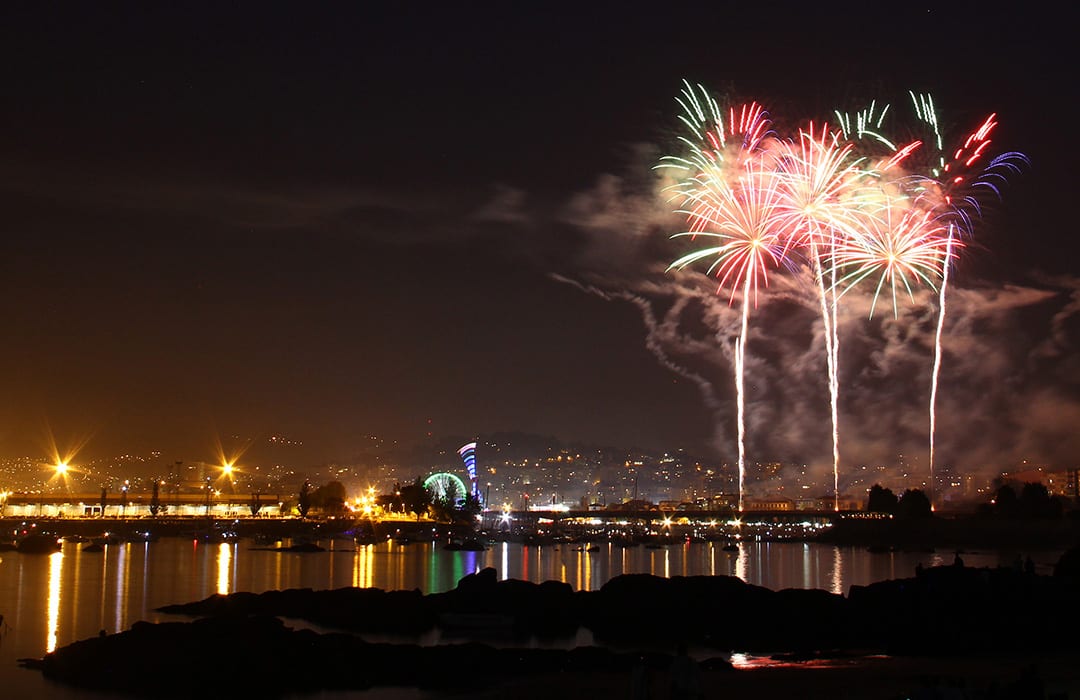
“Fires of Bouzas 2016” by Counting Stars is licensed under CC BY-SA 2.0.
o marisquiño
O Marisquiño es un evento de cultura urbana y deportes de acción que se celebra en Vigo y que atrae a muchas personas cada año. De hecho, es el más grande del sur de Europa en su categoría y cuenta con cuatro disciplinas olímpicas: Skate, BMX, Breaking y Basket 3×3.
El festival se fundó en el año 2001 como un campeonato de skate sencillo y fue creciendo poco a poco a lo largo de los años, hasta convertirse en la gran celebración que es a día de hoy.
Se celebra el segundo fin de semana de agosto en el Puerto Marítimo y suele compaginar sus campeonatos con música en directo, actuaciones y otras actividades.
christmas in vigo
Desde hace un par de años, la Navidad se ha convertido en una de las celebraciones más famosas de Vigo. Y no es porque tenga una larga historia detrás, no. La razón es simple: las impresionantes luces que envuelven toda la ciudad durante esta festividad.
Durante la época navideña, Vigo se llena de atracciones, mercados navideños, música y muchas, muchas luces de colores diferentes que han atraído a turistas y han sido alabadas a nivel internacional.
Es un espectáculo que no tiene comparación y que todo el mundo debe experimentar por lo menos una vez.
News
The old house of the bell ringers of Santiago Cathedral
The bell ringer’s trade has its origins in the Middle Ages, when in the great cathedrals and churches of Europe, bells played a fundamental role in religious and social life.
The traditional Santiago(é)Tapas arrives in the city in its XVI edition
From Thursday, February 13 to Sunday, March 2, will take place in Santiago de Compostela the XVI edition of Santiago(é)Tapas, a gastronomic event promoted and organized by Turismo de Santiago and with the support of the Diputación de A Coruña.
What to do this February in Santiago
The month of love has arrived and, with it, so do all these plans to the Galician capital. We tell you what to do this February in Santiago de Compostela.



